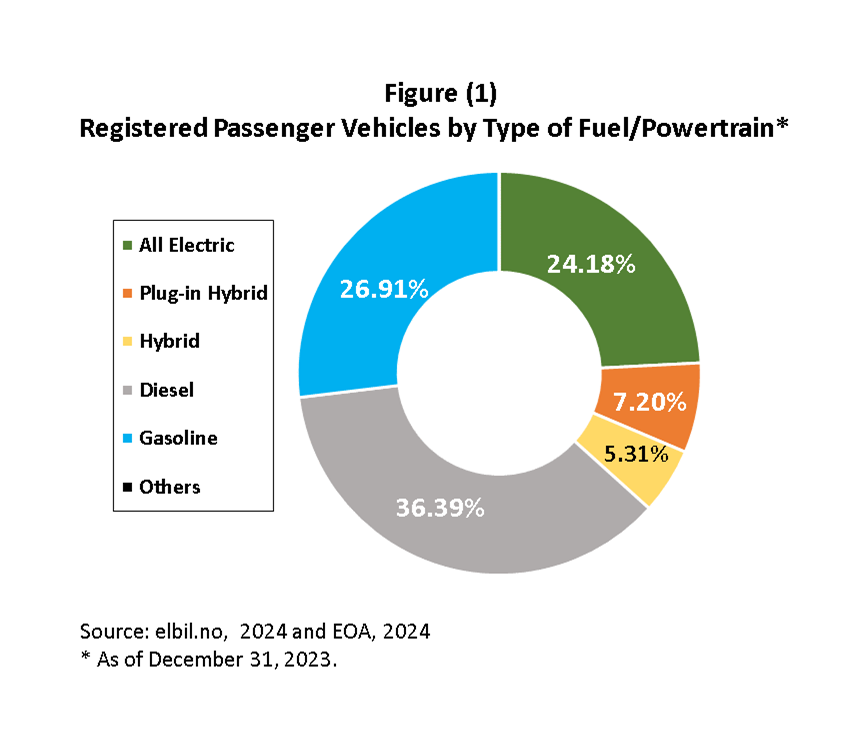Impact of EVs on Oil Demand and Emissions Greatly Exaggerated
EVs increased oil demand by more than 60 mb because of excessive tire wear and tear! (With 5 charts)
Related Links
EVs Take 90.6% Share In Norway — VW, Kia, Ford Debuts
Tesla extends lead in Norway sales, EVs take 82% market share
China's 2023 auto sales grow 12% on overseas demand for EVs
Chinese auto exports rose 64% in 2023, with strong push by EVs, as makers expanded overseas
Global electric car sales rose 31% in 2023 - Rho Motion
EVs Forecast to Account for Two Thirds of Global Light-Vehicle Sales in 2035
Ranked: Electric Vehicle Sales by Model in 2023
By the end of 2023, about one third of passenger vehicles in Norway were electric, plug-in hybrid, and conventional hybrid, though the majority was electric, as shown in Figure (1) below. Sales of EVs have been growing rapidly in recent years. However, the growth in 2023 was way lower than in the previous years as shown in Figure (2)
Some may think that the high number of EVs must have led to a proportional decline in fuel demand. But that wasn’t the case. Fuel demand declined by only 60% of full replacement of an ICE vehicle, and in the last six years, it dropped by 8,300 b/d, while it was supposed to decline by around 14,000 b/d based on the regular replacement of an ICE vehicle. For clarity, if an ICE vehicle is using 10 barrels of oil per year, buying an EV did not reduce demand by 10 barrels, it reduced it by only 6 barrels.
Keep reading with a 7-day free trial
Subscribe to Energy Outlook Advisors' Newsletter to keep reading this post and get 7 days of free access to the full post archives.





